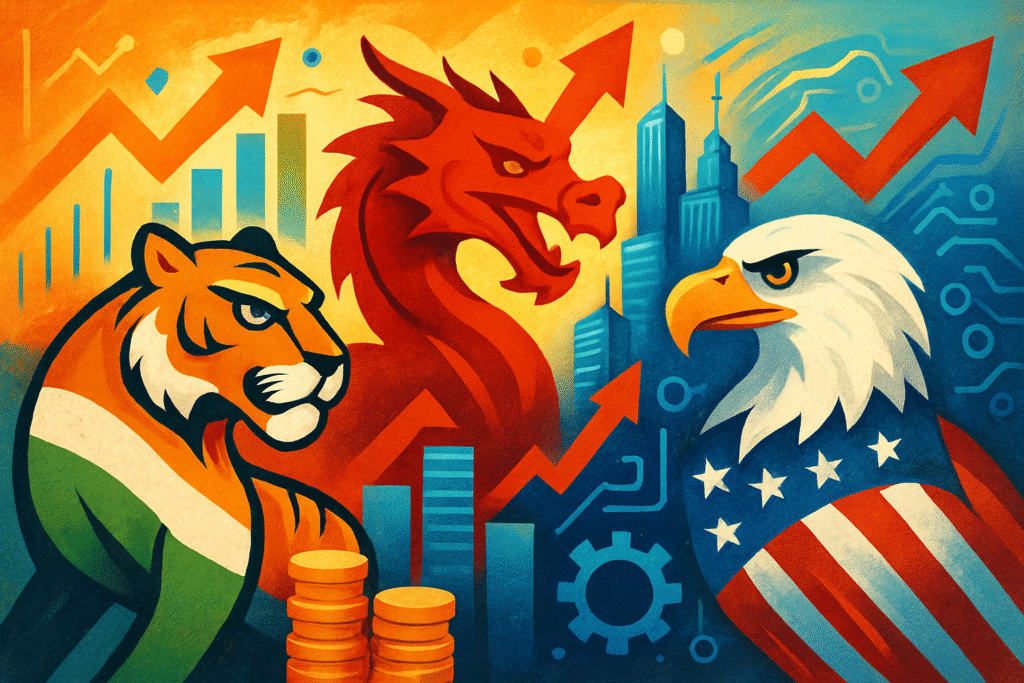In this insightful episode of “WTF is Finance,” investor and economist Ruchir Sharma discusses the evolving global economic landscape, focusing on the competition between India, China, and the United States in the coming decade. The conversation revolves around economic models, social mobility, government policies, and future growth prospects for these global players.
Capitalism and Economic Freedom
Ruchir Sharma defines capitalism as the system that gives people maximum economic freedom. He contrasts different models of capitalism seen in countries such as the US, China, Singapore, and India:
- China and Singapore emphasize economic freedom with limited political freedoms, fostering rapid growth through infrastructure and export-led manufacturing.
- India follows a democratic model with more political freedom but comparatively less economic freedom, leading to moderate growth.
Lessons From China and Singapore
The discussion highlights the success of China and Singapore’s approach:
- China fired millions from state-owned enterprises in the 1990s to boost efficiency.
- Both countries embraced free trade and cut tariffs to create a highly competitive economy.
- Heavy government investment in infrastructure laid the foundation for economic growth.
- This “ruthless” capitalism avoided premature welfare spending, focusing on creating wealth before social safety nets.
India’s Growth Challenges
India’s growth is described as slower (around 6%) due to political and social complexities:
- India’s democratic setup imposes challenges in delivering swift economic reforms.
- Welfare programs in India, while politically necessary, may hinder aggressive economic growth.
- Compared to East Asia, India’s economic freedom and deregulation are limited, which impacts competitiveness.
Social Mobility and Inequality
The conversation touches on social mobility trends globally:
- Social mobility has declined in many developed countries, causing widespread dissatisfaction.
- In contrast, India still shows signs of increasing upward mobility but faces challenges in equality of opportunity.
- Ruchir Sharma emphasizes “equal opportunity” rather than “equal outcome” as key to sustained capitalism.
The Role of Government and Regulation
- Excessive regulation tends to favor established businesses, blocking new entrants.
- Deregulation and simpler laws can boost entrepreneurship and competition.
- The federal structure of India with powerful states creates a competitive environment that can drive localized economic growth.
The Future Outlook: India, China, and the US
- The US is no longer the uncontested superpower but retains advantages in technology and capital markets.
- China and Singapore’s models showcase the benefits of economic freedom with an authoritarian political system.
- India’s democratic capitalism needs to balance social welfare with reforms to unlock faster growth.
- The ongoing geopolitical shifts and technology advancements, especially AI, will influence economic trajectories.
Conclusion
Ruchir Sharma’s analysis emphasizes that the next decade will be shaped by how India, China, and the US navigate economic freedom, social mobility, governance, and global competition. India has unique challenges and opportunities shaped by its democratic framework, with potential gains from deregulation, competitive federalism, and focus on infrastructure.


